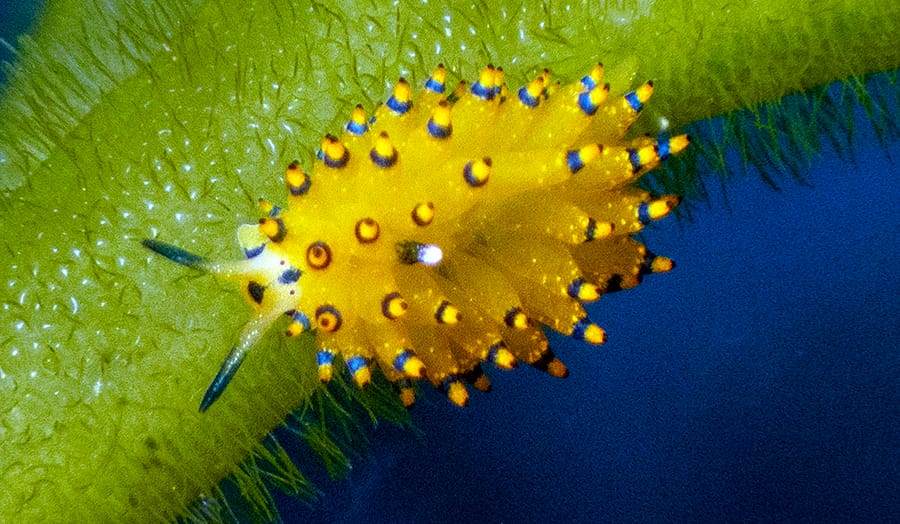In 1828, the tiny sea slug Stiliger ornatus was first described from the Red Sea. It was collected from a reef and studied in a lab—no one had ever seen or photographed it alive in its natural habitat. Almost two centuries passed, and the mystery remained.
Meanwhile, similar-looking slugs popped up across the Indo-Pacific. From East Africa to Japan and the Marshall Islands, many nudibranchs were labeled Stiliger ornatus. But were they really? Probably not. Careful morphological and molecular analysis is needed to establish species identity.
The confusion grew because we didn’t know exactly what S. ornatus looked like in the wild. Even Google shows mostly wrong images. Many of them actually show a different, unnamed species of Costasiella, misidentified in a respected field guide (Gosliner et al., 2018).
That changed on May 16, 2025.
Citizen scientists Andrey Ryanskiy and Iryna Khlopunova were diving in Dahab, Red Sea. At 30 meters deep, they found something strange—patches of Codium algae, usually seen in shallow water. On each plant, tiny yellow-orange slugs appeared, just 2–7 mm long. A. Ryanskiy photographed similar slugs in Indonesia and the Philippines. He immediately realized: this was a “true” Stiliger ornatus. The family team focused on photographing them in their natural habitat — on their host algae. Despite the limited time at such a depth, several photos turned out well.

The slugs matched the original 1828 description and illustration exactly. Blue tentacles with yellow tips. Green back. Yellow belly. A black spot on each side of the head. The gills—dark blue in the center, orange below, black at the very tip. A white papilla above the anus on the middle of the back. Finally, the true Stiliger ornatus was revealed.
Why did it take 197 years?
Maybe because Red Sea nudibranchs haven’t been studied as much as in Southeast Asia. The research effort simply wasn’t there.
But now that’s changing.
More observations are planned. The team wants to see if this was a seasonal appearance—or if these slugs have been there all along, just waiting to be found.
Dive support: Scuba Seekers
References:
Blatterer, H. (2019). Mollusca of the Dahab Region (Gulf of Aqaba, Red Sea). Denisia 43: 1–480.
Ehrenberg, C.G. (1828–1831). Animalia evertebrata exclusis Insectis.
Gosliner, T.M., Valdés, A., & Behrens, D.W. (2015). Nudibranch and Sea Slug Identification: Indo-Pacific. New World Publications.
Ryanskiy, A. (2022). Red Sea Marine Life. Self-published on Amazon KDP. ISBN-13 : 979-8986828701
Ryanskiy, A. (2019). Nudibranchs of the Coral Triangle. Self-published on Amazon KDP. ISBN-13 : 979-8986828763
Yonow N. Sea Slugs of the Red Sea (Pensoft Series Faunistica)




